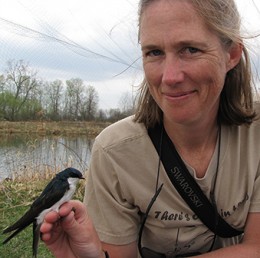In the College of Arts and Sciences, there are always big things happening. Take a look at some of our highlights from September 2016:
Gender, Women, and Sexuality Studies
Journalism and Mass Communications
Sociology, Anthropology, and Social Work
Art
 Associate Professor of Printmaking Jason Scuilla was invited to show his prints, including lo Lo Vidi (pictured at left), in an invitational group exhibition titled Grafica D’Arte Americana Contemporanea, September 9 – 23 at the Galleria Il Bisonte, Florence, Italy. The exhibition was curated by Andrew DeCaen.
Associate Professor of Printmaking Jason Scuilla was invited to show his prints, including lo Lo Vidi (pictured at left), in an invitational group exhibition titled Grafica D’Arte Americana Contemporanea, September 9 – 23 at the Galleria Il Bisonte, Florence, Italy. The exhibition was curated by Andrew DeCaen.
Assistant Professor of Graphic Design Daniel Warner had two posters selected to appear in the Ecuador Poster Bienal. The Ecuador Poster Bienal is the principal axis of visual communication for the new continent, focusing its efforts as an academic, professional and creative event. Pictured at right is Warner’s Verfall. His poster Music Is Oxygen also received an Award of Excellence from Creative Quarterly: The Journal of Art and Design.
Assistant Professor of Ceramics Amy Santoferraro had works accepted into the group show Ceramics as Deception at the Urban Arts Space gallery in Columbus, Ohio. Pictured at left is Santoferraro’s Bubblegum. Return to top.
Biology
Alice Boyle was invited to two oral symposium presentations at the North American Ornithological Conference in Washington DC in late August and also presented three co-authored sessions with members of her K-State lab at the same meeting. The lab and K-State Biology had a major presence at this meeting—the largest ornithological conference in history.
same meeting. The lab and K-State Biology had a major presence at this meeting—the largest ornithological conference in history.
Boyle is also spearheading a two-year, $200,000 National Science Foundation project to investigate how climate variation affects the survival, condition and reproduction of a small tropical bird, the white-ruffed manakin. The study aims to fill important information gaps that hamper our ability to predict consequences and mitigate ongoing global climate change.
Kathrin Schrick has been awarded a $321,000 grant from the National Science Foundation Genetic Mechanisms Program in the Division of Molecular and Cellular Biosciences. The gran, titled “START Lipid/Sterol Binding Domains in Homeodomain Transcription Factors from Plants,” will enable research to investigate protein-metabolite interactions underlying changes in gene expression in plants using the model system Arabidopsis. Schrick says, “We want to understand how plants respond to internal metabolic signals during development. The regulatory proteins we study are known to affect biomass in crop plants, so elucidating the mechanisms underlying transcriptional activity is of relevance to agriculture as well as to ecological systems.” The grant will fund postdoctoral trainees, STEM outreach activities, as well as two undergraduate summer students per year to participate in the Division of Biology REU program on Ecology and Evolutionary Biology of Changing Environments. Return to top.
Continue reading “College Highlights, September 2016”





